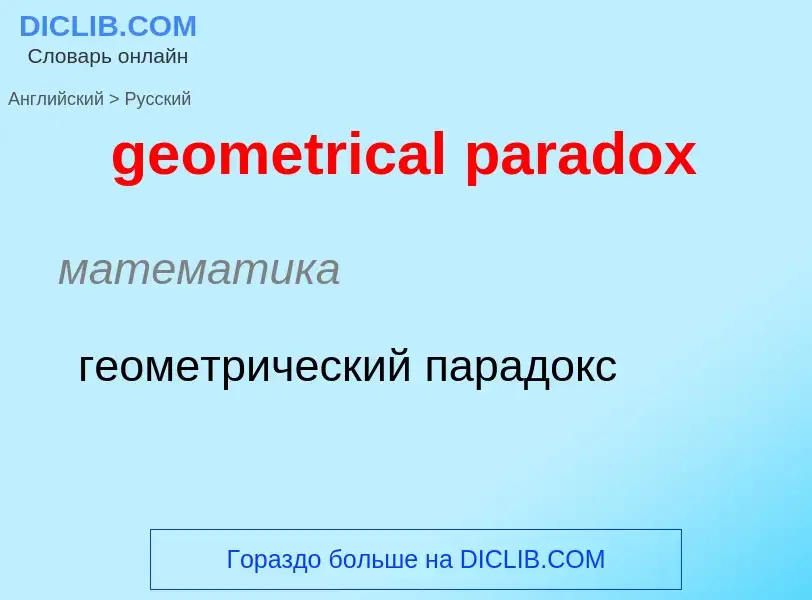Перевод и анализ слов искусственным интеллектом
На этой странице Вы можете получить подробный анализ слова или словосочетания, произведенный с помощью лучшей на сегодняшний день технологии искусственного интеллекта:
- как употребляется слово
- частота употребления
- используется оно чаще в устной или письменной речи
- варианты перевода слова
- примеры употребления (несколько фраз с переводом)
- этимология
geometrical paradox - перевод на русский
математика
геометрический парадокс
математика
парадокс при голосовании
математика
парадокс лжеца
Определение
Википедия

In fluid dynamics, d'Alembert's paradox (or the hydrodynamic paradox) is a contradiction reached in 1752 by French mathematician Jean le Rond d'Alembert. D'Alembert proved that – for incompressible and inviscid potential flow – the drag force is zero on a body moving with constant velocity relative to the fluid. Zero drag is in direct contradiction to the observation of substantial drag on bodies moving relative to fluids, such as air and water; especially at high velocities corresponding with high Reynolds numbers. It is a particular example of the reversibility paradox.
D’Alembert, working on a 1749 Prize Problem of the Berlin Academy on flow drag, concluded: "It seems to me that the theory (potential flow), developed in all possible rigor, gives, at least in several cases, a strictly vanishing resistance, a singular paradox which I leave to future Geometers [i.e. mathematicians - the two terms were used interchangeably at that time] to elucidate". A physical paradox indicates flaws in the theory.
Fluid mechanics was thus discredited by engineers from the start, which resulted in an unfortunate split – between the field of hydraulics, observing phenomena which could not be explained, and theoretical fluid mechanics explaining phenomena which could not be observed – in the words of the Chemistry Nobel Laureate Sir Cyril Hinshelwood.
According to scientific consensus, the occurrence of the paradox is due to the neglected effects of viscosity. In conjunction with scientific experiments, there were huge advances in the theory of viscous fluid friction during the 19th century. With respect to the paradox, this culminated in the discovery and description of thin boundary layers by Ludwig Prandtl in 1904. Even at very high Reynolds numbers, the thin boundary layers remain as a result of viscous forces. These viscous forces cause friction drag on streamlined objects, and for bluff bodies the additional result is flow separation and a low-pressure wake behind the object, leading to form drag.
The general view in the fluid mechanics community is that, from a practical point of view, the paradox is solved along the lines suggested by Prandtl. A formal mathematical proof is lacking, and difficult to provide, as in so many other fluid-flow problems involving the Navier–Stokes equations (which are used to describe viscous flow).




